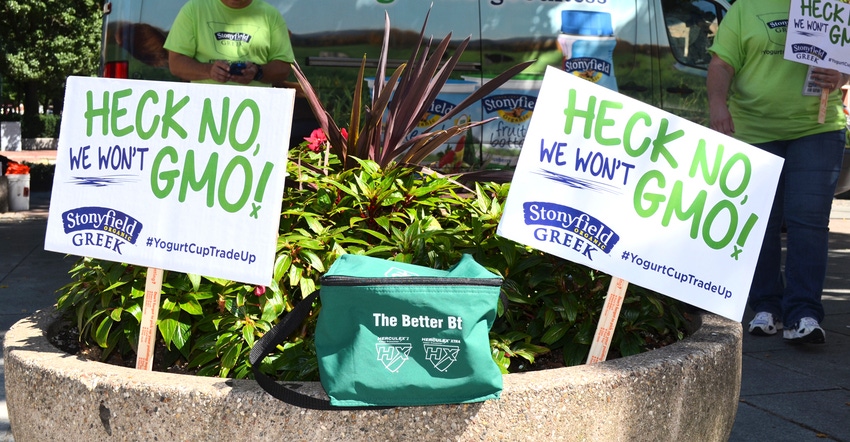
Mazon, Ill., farmers Paul and Donna Jeschke have talked to hundreds of nonfarm consumers over the past few years, and there’s a refrain they hear over and over: People have no idea what a GMO really is.
“They think everything has a GMO component to it,” Donna says. “They’re always surprised when you mention the 10 that exist commercially now.”
The 10 crops that are commercially available and approved by USDA, the Food and Drug Administration and the Environmental Protection Agency are alfalfa, apples, canola, corn (field and sweet), cotton, papaya, potatoes, soybeans, sugarbeets and summer squash.
Paul adds that the most blatant misconception he hears is that people think non-GMO means pesticide-free. “They think GMO is a pesticide-infested plant and that it produces its own toxic pesticide. But it’s hard to blame people for not understanding that.”
Paul will often go on to explain that with rootworm-resistant corn, for example, the corn produces a protein that the bug can’t digest. “Vertebrates can, however,” he says. “And if we don’t use that GMO plant, the alternative is to put a pesticide on the ground in April that’s persistent enough to still be there at the end of June.
“I don’t care to do that if there are other products available.”
What else do the Jeschkes hear, as they host Chicago tour groups on their farm and moderate discussion panels about the new “Food Evolution” movie?
Consumers often think wheat is a GMO, likely because of the controversy surrounding its initial development — but they don’t realize it was never brought to market. Consumers also tend to think strawberries and blueberries are GMOs, because they’re often labeled non-GMO in grocery stores. They ask what farmers do to cows to make them non-GMO, because they see non-GMO milk labels at the store.
“All the labels make it harder and more confusing,” Donna says — in some cases, intentionally confusing.
At the end of the day, the Jeschkes know food is often an emotional issue, and people will make decisions based on emotions and not facts.
“How do you balance the conflict between emotion and science?” Paul asks. “Especially when emotion is more of a motivator than science for many people.”
Looking for an easy way to share the facts about GMOs? Check out the infographic below, and download it to share with friends.

About the Author(s)
You May Also Like






